The year 2020 marks 150 years since the layout of the town of Julian. In honor of the anniversary the Chamber of Commerce, Julian Historical Society and Julian Pioneer Museum are planning events throughout the year to celebrate Julian, its founders and the accomplishments of many who contributed to the towns existence.
The Chamber will also be coordinating with all the organizations and clubs in town to incorporate the 150 year celebration into their various events and activities.
The kick off will be announced on February 22 in celebration of the founding of the Washington Mine (currently being reconditioned for public use by the Historical Society).
A Founders Day event will be in March 14 to acknowledge the filing of the town map (in 1870) with the San Diego County Recorder.
From “HISTORY of JULIAN” Published by the Julian Historical Society (1969) – written by Myrtle Botts
With the passing of time and the pioneers, it becomes more difficult to write the true history of early days. In fact, one would need the story of every person who lived in this village to really give true tale of its being, much as a jig-saw puzzle is assembled. Lacking many pieces to the story we attempt to record the parts still obtainable.
In 1868 high in the mountains, 60 miles northeast of San Diego lived three families, a Mr. and Mrs. Horrall and family of ten children. Mr. Horrall, a native of Indiana, his wife a native of Missouri, came to California in 1866. Thomas Brady, also from Indiana, moved to this location in 1866, settling on a farm three miles due north of what later became Julian. The Webb family lived farther north on the Volcan Mountain.
At the same time, unknown to these three families, in a small town in Georgia three brothers and their two cousins had returned to their homes after fighting in the Confederate Army, only to find devastated and ravished country with a dozen freed slaves to every white man vieing for work and food. They gave up hope when the invasion of Carpetbaggers completed the ruin. They decided to leave their Georgia home and seek their fortune in the West.
The three Bailey Brothers, Drury D., James 0. and Frank, with their cousins Webb and Mike Julian, made an agreement to meet in New York on a certain day in 1867 to take a boat from New York to San Francisco.
Mike Julian had been panning a creek not far from the cabin, and had found a fine nugget. This panning was in a draw between what later was the Helvitia mine and Swytzer flats north of what later was the Fred Shaw place.
When Drue and the others staked their land they had no neighbors, but early in January 1870 three families stranded at New River Station, part of an emigrant caravan from Texas bound for Oregon, were forced to remain behind when the caravan moved on, their animals being so worn they were unable to continue. The Ragsdales, the Skidmores and the Gormans rested a day, then took the road leading to Coyote Wells, Jacumba, La Rosa, following the wagon trail of the old Jackass mail route. Reaching Pine Valley the Ragsdale family decided to winter there; the Skidmore family would continue on to -San Diego, but they spent the winter at Cuyamaca. The Gormans pushed on north and eventually passed Bailey’s cabin. Finding good feed and water in a draw a short distance beyond, they made camp where the north end of Washington Street is now.
The middle of December, 1869 Elso Wods and Thomas Coleman had found placer in a creek four miles westerly of Baileys cabin. This is the creek running through Spencer Valley, now known as Coleman’s prospectors were soon hot-footing for the find.
Late corners, finding all the ground along the creek occupied, began prospecting for quartz. On February 20, 1870 M. D. Putman and William Hammel found ore and located the Van Wirt mine one mile northwest of Bailey’s cabin.
On February 21, 1870 Mr. Bickers, Wills and Gower, three late corners, found a promising quartz ledge, but because it was Sunday and their religion forbade them to locate, they waited until the next day, the 22nd of February, to locate. This being on Washington’s Birthday, they named the mine the Washington. The richness of this mine aroused real excitement; prospectors soon swarmed to this new gold strike. The qugrtz of the Washington mine was liberally encrusted with free gold. A ton of ore was exhibited in San Diego for a few days, then sent to San Francisco where it stirred real excitement: jewelers eagerly sought ore from this mine for ornamental purposes.
In order to protect their interest the first corners formed a mining district, adopted bylaws, and Mike Julian was elected Recorder.
Drue also went prospecting, and on March 2, 1870 found and located the San Diego mine, and on the 7th he located the Good Hope. Other locations followed rapidly; on the 11th of March, the Owens and High Peak, then the Eagle, Helvetia, California and many others were filed.
With the great influx of people Drue felt there should be a business center. Drue employed John L. McIntire to survey and plot a Townsite on a portion of his land nearest the mining center. He named the new town ‘Julian” in honor of his cousin Mike Julian. When asked why not Bailey, he replied he thought the name Julian was a better sounding name, and Mike was the handsomest man in camp and a favorite of the ladies; anyway both were family names.
The first school district was also named for Mike. Mike was elected as a Trustee of the Board, the Mining District was also named for him, and, to top it all off, James Madison, owner of the fastest quarter horse ever bred and raised in the mountains, christened the horse “Mike Julian.” Mike later in life moved to Long Beach where he opened the Julian Hotel which he ran for years.
Now with the town on its way the greatest handicap was a lack of roads. The old Kanaka Trail, the first trail into the area, came in from Temecula, past the Santa Ysabel Mission, up the draws past the homes of the first three settlers at the foot of Volcan Mountain. All supplies were brought in over pack trail, at great expense. A toll road was built out of Santa Ysabel, through Spencer Valley and on to Julian; later the County bought this road and it became a public highway.
Then, a regular four horse mail stage line was established by Bill Tweed between San Diego and Julian. Wells Fargo established an express office in Julian, with Chester Gunn as agent. This office was closed after a short time, but was re-established later with George Dan-nals as manager. George guarded the express on week days, and on Sunday would preach to any who cared to listen, this making him the first preacher in Julian.
The Skidmores while prospecting at Cuyamaca, discovered the Stonewall Jackson mine, but the owners of the Cuyamaca Grant insisted it was on their land and would not give Skidmore a lease on the property. He was about to give up his claim when A. P. Frary, Sr., happened along; filled with the spirit of adventure, and having a well filled purse to back up this spirit, he was happily taken in as a partner in the mine. He proceeded to install a five stamp mill, despite the Grant owners protest, and they were soon crushing rich ore. Frary bought hte Skidmore interest in the mine in 1872, proceeding alone. With the lawsuit in court, the two factions bickering back and forth, Frary continued to run the mine until 1875 when the Court partitioned off the land. The party to whom the location of the mine happened to fall refused to lease the mine to Frary so he shut down the mill and operation of the mine. The Stonewall, being a wet mine, was soon flooded, timbers rotted, shaft and tunnels caved in and the mine remained idle for years. The town that had built up near the mine was also soon abandoned.

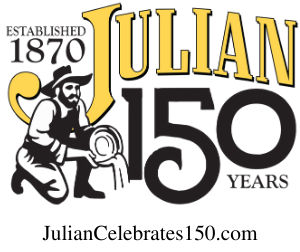
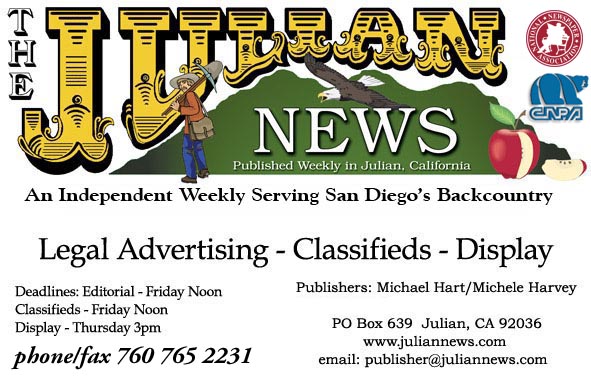
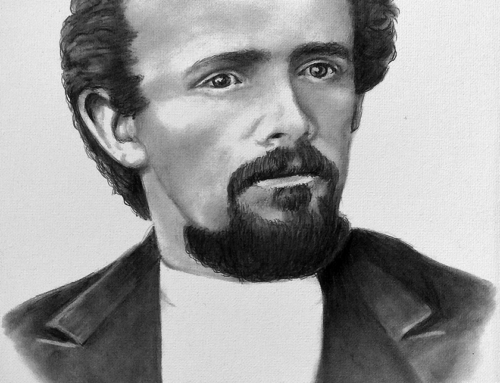
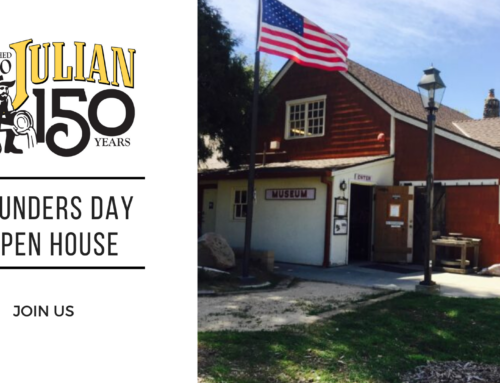
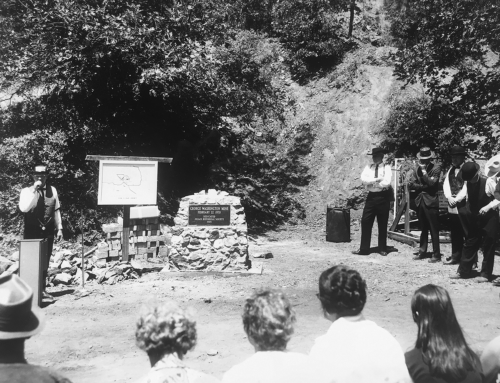
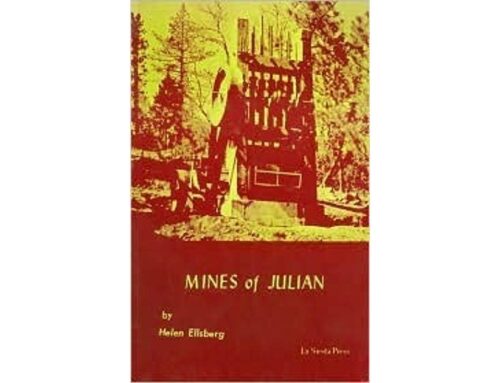
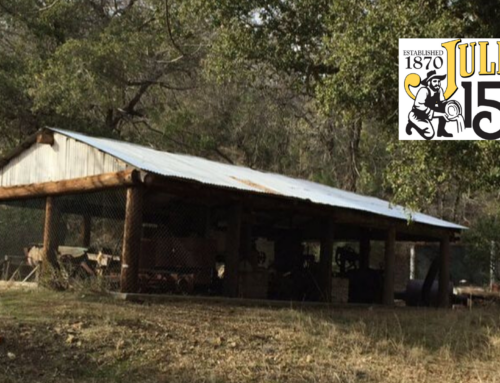
[…] While Coleman was helping to establish the infrastructure for this small but bustling town, Newton was in Missouri, thinking about her own family’s future. She didn’t tend to talk much about her years of enslavement, beyond the fact that she was once owned by a Mr. Dyer of Independence, Missouri, and that her husband had died, according to the late local librarian and historian Myrtle Botts in her 1969 History of Julian. […]
[…] While Coleman was helping to establish the infrastructure for this small but bustling town, Newton was in Missouri, thinking about her own family’s future. She didn’t tend to talk much about her years of enslavement, beyond the fact that she was once owned by a Mr. Dyer of Independence, Missouri, and that her husband had died, according to the late local librarian and historian Myrtle Botts in her 1969 History of Julian. […]